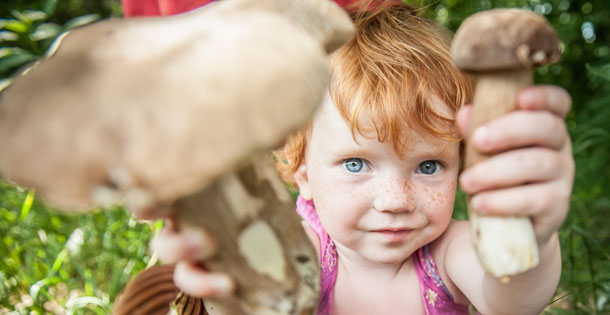Finders Keepers: Foraging Tips for Beginners
Before heading into the wild on the hunt for your next meal, seek out a foraging expert who can teach you in a class, on a tour, or one on one. Forager Green Deane — known for his teaching videos on YouTube — shares names of instructors by state at eattheweeds.com. Teachers listed here, Deane says, have led foraging classes, are published by reputable presses, or are experts he has met at wild food events. Sam Thayer, author of The Forager’s Harvest: A Guide to Identifying, Harvesting, and Preparing Edible Wild Plants, also has a useful list of instructors, events and other resources at www.foragersharvest.com/resources-links.
Remember that many wild mushrooms are poisonous, and some poisonous plants look similar to edible varieties. “Don’t think of it as learning foraging,” Thayer says. “Learn one plant. Learning what one plant looks like doesn’t give you license to collect anything else.”
It’s essential to confirm each find, preferably in more than one guide or resource. The books mentioned here are a good starting point, and the Peterson Field Guides are a respected reference. Apps for iPhone and Android, such as the Wild Edibles Forage app from well-known teacher Steve Brill, are visual and easy to take anywhere. (Brill also sells “flash cards” for those who prefer that approach.) Sergei Boutenko, author of Wild Edibles: A Practical Guide to Foraging has produced a series of free wild foods teaching videos on YouTube.

Begin with plants that don’t require much hunting. Plants like dandelions and lambsquarters can be uncovered almost anywhere. Purslane, another common weed, boasts heart-healthy omega-3 fatty acids and will pop through cracks in concrete. Wood nettles, common in the South, East Coast, and Midwest, are one of Thayer’s favorite cooked vegetables. The shoots taste mild and slightly sweet, like asparagus, boiled and served with a bit of salt and butter. The cooked leaves are edible, too, but plan to wear gloves when collecting to avoid the plant’s stingers. Other popular edibles for new foragers are mulberries, black walnuts, and wild onion or garlic. Try just a bit of each new food initially to make sure you like it and your body reacts well to it.
Bryce Watts, president of the Forager Foundation in Vancouver, British .Columbia., recommends taking only 10ten percent or less of any patch you forage. “This leaves enough plant material for other people,” he says, “but also for other animals which often enjoy the taste of a good berry just as much as we do.” The guideline helps ensure plants stay robust, especially in the spring when new shoots burst forth. Though it may be tempting to start by canvassing the ground in your own backyard, don’t do it unless your yard has been free of pesticides for at least two years.

Get to know a new plant every couple of weeks, and you’ll have some two dozen edibles over the course of a year to harvest and savor. You just may just find that foraging feeds your spirit, too. “For me, foraging has been nothing short of a revelation,” says Ava Chin, former Urban Forager columnist for The New York Times, and author of Eating Wildly: Foraging for Life, Love and the Perfect Meal. “It changed my outlook on the city where I grew up.”
Interested in learning more? Find how-to’s, classes, and tours across the U.S. at saturdayeveningpost.com/foraging.